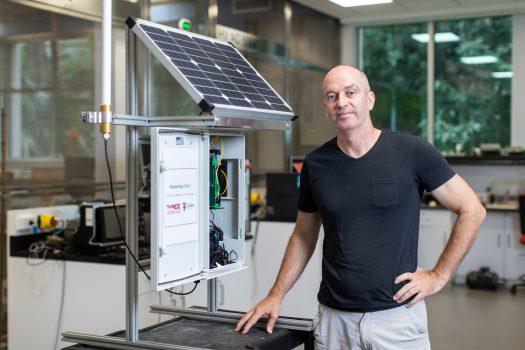An acoustic system used to locate spy submarines and other intruders in Australian waters is being adapted to test a revolutionary leak detection system for Sydney’s water network.
Government News understands that Sydney Water has provided UNSW researcher Professor Francois Laouceur with $250,000 to conduct a six-month study on a possible way help prevent the loss of an estimated 10 per cent of the city’s water, or 150 million litres, from leaks each day.
“You can imagine you have a 10 kilometre water main that’s buried underground, and it’s losing water. Where is the leak? They’re not going to dig it up just to find out. They need to be able to pinpoint those leaks,” Professor Ladouceur told Government News.
The study involves the use of sonar arrays, or tubes with super sensitive miniature microphones attached to them, to “listen” for leaks and convey the information back to Sydney Water engineers, enabling them to accurately pinpoint and plug the source of the leak.
The system will be trialed on an unused water main at a test site in the southwestern suburb of Strathfield from June.
“We’re going to insert the sonar and then create fake leaks and use the system to detect their position,” Professor Ladouceur said.
Leaking water pipes are an issue for any water authority, Supply Outfit Service Planning manager Craig Crawley told Government News, and Sydney Water was always mindful of keeping leakage rates down, particularly in times of drought.
“What we’re looking at is leading-edge institutes who are doing research in measurement parameters that might help us manage leakage, with an eye to also potentially help us extend the life of our network,” he said.
“Now with the introduction of the Internet of Things and with these small sensors, it allows us to be quite agile in putting in place measurement across our network to solve problems. What we’re looking at is different scientific takes on measuring parameters that might help us understand leakage and the condition of our pipes.”
From the oceans to the water main
Professor Ladouceur says the technology is already in use for private sector research on ocean monitoring to detect the presence of unauthorised vessels.
“These microphones are super sensitive,” he said. “We’ve been developing this technology for ocean monitoring and we thought that we could use the same technology to locate leaks, because leaks make noise.”

Professor Ladouceursays the technology components, supplied by defence contractor Thales, are not expensive and could provide for a “potentially very cheap” water main system.
The technology could ultimately be deployed throughout the entire network, which supplies 1.5 billion litres of drinking water to 4 million people each day in the metropolitan region, Blue Mountains and Illawarra.
If the study works the next step would be to design a tailor-made version that could be built into pipes before they are laid.
Sydney water, with assistance from the NSW Smart Sensing Network (NSSN), will also trail the use of gravitometers to detect a change in gravity fields around pipes, and is also exploring data analysis systems.
The sonar technology could revolutionise leak detection, Professor Ladouceur says. “If our approach works it will be a fantastic product and a fantastic market to approach. All cities are facing issues with detection and it’s an important problem to solve”.
Comment below to have your say on this story.
If you have a news story or tip-off, get in touch at editorial@governmentnews.com.au.
Sign up to the Government News newsletter.





In Sydney with all the B-Doubles driving around and the tunnels being dug and that half the city sits on soft sand, its sensitivity will be drowned out by the background racket.